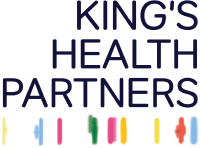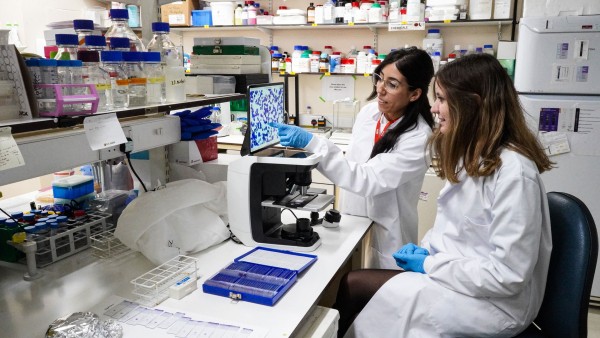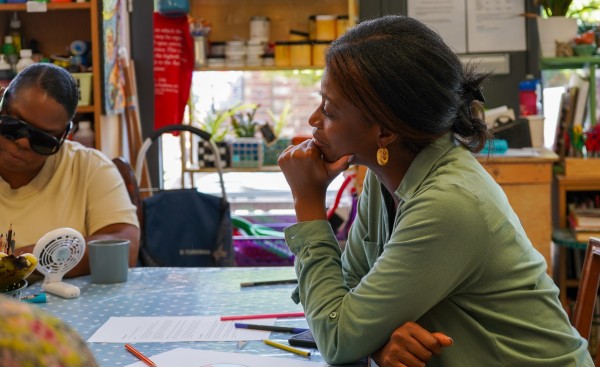7 May 2024
Asthma is a common lung condition that causes occasional breathing difficulties. It affects people of all ages and often starts in childhood, although it can also develop for the first time in adults.
The main symptoms of asthma are:
- a whistling sound when breathing (wheezing);
- breathlessness;
- a tight chest, which may feel like a band is tightening around it;
- coughing.
There's currently no cure, but there are simple treatments that can help keep the symptoms under control. Asthma is usually treated using an inhaler, a small device that lets you breathe in medicines. Most patients should have a preventer inhaler that they use every day to prevent symptoms from occurring, and a reliver inhaler to ease symptoms when they occur.
However, symptoms can sometimes get temporarily worse. This is known as an asthma attack. Asthma attacks can be scary, but the good news is that they can be prevented. That’s why, there is a need to educate people with asthma to appropriately manage their disease, and to know when to seek medical help.
It’s no surprise then, that this year’s World Asthma Day is “Asthma Education Empowers”. We caught up with Laura-Jane Smith, Consultant Respiratory Physician at King’s College Hospital, and Maeve Savage, Highly Specialist Pharmacist in Asthma, COPD and Integrated Respiratory Care, on the work they are doing to support excellent asthma care and how treatment is changing.
Why asthma and sustainable care?
There is a significant problem with asthma care in the UK. The UK has one of the worst asthma mortality rates in Europe, and our hospital admission rate is significantly higher than other high-income countries. Ever since the National Review of Asthma Deaths (NRAD) report was published over 10-years ago, we have known that the contributing factors behind these depressing statistics are largely avoidable.
Firstly, there is a problem with accurate diagnosis. Up to 30% of patients who have a clinical diagnosis of asthma in England have been misdiagnosed. This means that these patients may have been prescribed inhaler therapy with no clinical benefit and leading to huge medicines waste. Meanwhile, at the other end of the spectrum, underdiagnosis is also an issue. Underdiagnosis can reduce quality of life, increase risk of exacerbations (when symptoms become much more severe) and cause airway remodelling.
Short-Acting Beta-Agonists (SABA) is a medicine usually given in the form of an inhaler or an inhalation solution. Most people recognise this as their blue inhaler. Over-use of SABA is a major problem in the UK. Regarded as three or more doses in a seven-day period, or more than three inhaler devices per year, over-use of SABA is associated with increased risk of exacerbations and even death. National guidelines no longer recommend SABA as first line treatment for asthma patients; but, patients still tend to consider SABA as their primary treatment. As a consequence, preventative medicines such as inhaled corticosteroids (ICS) (anti-inflammatory sprays or powders that you breathe in), which are the only medicines that treat the cause of asthma symptoms, continue to be underused.
We have known about the challenges with asthma diagnosis and treatment for many years now, however, there are new pressing challenges. The cost of living crisis has resulted in people being unable to afford prescription charges leading to problems accessing medicines, whilst the climate crisis has left people with respiratory diseases more vulnerable to environmental triggers and exacerbations.
Unfortunately, inhaler devices, the very means by which airway diseases are treated, can contribute to the climate crisis. Inhalers account for 3% of the total NHS carbon footprint. This is largely driven by the hydrofluorocarbon propellant gases in pressurised metered dose inhalers (pMDI), which are powerful greenhouse gases. Around 70% of all inhalers prescribed in the UK are pMDIs, compared to around 20% in Sweden, and when we consider this alongside SABA overuse, it’s not surprising to learn that SABA inhalers account for two thirds of England’s inhaler carbon footprint.
The key thing for our patients to know is that good asthma care is good for them and for the planet. Many patients do really well on lower carbon dry powder inhalers, but even for those who need to use pMDI inhalers, the better their asthma is controlled, the fewer SABA reliever inhalers they’ll need, resulting in fewer hospital admissions and visits to the GP.
The UK, therefore, has a significant amount of work to do to improve this double whammy of poor asthma care coupled with high inhaler carbon footprint. The good news is that every improvement we make is a win-win; there are many opportunities for change, and the work to address this has already started.
Tell us about high value sustainable inhaler practice and what you set out to achieve? How will this work support health equity?
The South East London (SEL) Responsible Respiratory Prescribing Group (RRP) aims to provide a forum for healthcare professionals across acute, community, and primary care to work together to develop safe, effective, and evidence-based care for both adults and children with respiratory disease.
We are aspiring to be leaders in sustainable respiratory prescribing, and our focus is to address SABA over-reliance in asthma, address poor adherence to inhaled corticosteroids, and promote the prescribing of lower carbon footprint inhalers and regimes.
Additionally, SEL has a higher than the national average rate of hospital admissions for young people and there are higher rates of asthma found in ethnic minority groups and in areas of social deprivation. There are approximately 20 deaths annually due to asthma.
In order to ensure progress is made towards tackling health inequalities in SEL, the SEL RRP in collaboration with primary and secondary care clinicians, SEL Integrated Care Board, and business intelligence analysts, have developed a Respiratory Dashboard. The Dashboard includes data on health inequalities, sustainable prescribing, and asthma care. It is envisioned that the data will help to identify key areas of need and where resources should be targeted. Therefore, reducing health inequalities and improving overall care. The Dashboard will help to track progress and continually review our priorities as a whole system.
Tell us about how you will support asthma patients and HCPs with education about asthma and sustainability?
We launched the SEL Asthma in Adults guide in conjunction with Clinical Effectiveness SEL (CESEL) in Autumn 2023.
The SEL Asthma in Adults guide is a full pathway for asthma management and was developed to address health inequalities, improve diagnosis, address the issues of SABA over-prescribing and poor adherence to ICS, and encourage sustainable inhaler use.
These new comprehensive guidelines are accessible for busy clinicians and incorporate the 2023 Global Initiative for Asthma (GINA) guidelines, which represent the biggest change in asthma treatment recommendations for many years. Our asthma guidelines recommend ICS-formoterol, or anti-inflammatory reliever therapy (AIR), as first line asthma treatment for mild asthma. We are proud to include AIR therapy in our guide as the preferred first step for mild asthma. Evidence shows that AIR can improve clinical outcomes in comparison to regular ICS, so we are excited to see the impact for our patients across SEL as this approach to therapy rolls out. Additionally, the guide promotes AIR and maintenance and reliever therapy (MART) SABA-free pathway as the preferred treatment pathway, as well as highlighting greener inhaler device options.
The SEL Asthma in Adults guidelines are evidenced-based and provide a huge opportunity to improve asthma outcomes. National guidance has not yet been updated to reflect this, so we are very proud here in SEL to be ahead of the national curve.
Of course, this involves a major change in asthma treatment, and with the promotion of SABA-free pathways, clinicians and patients alike may not initially feel confident with these changes. The SEL RRP recognises this, which is why, in conjunction with CESEL, we are developing a suite of education and training resources to support our clinicians to take the leap toward sustainable asthma care. We’ve already run a number of webinars and education events at Protected Learning Time events for GPs, but watch this space for more events to come!
How does being part of King's Health Partners help your work?
Implementing changes to pathways, identifying unwarranted variation in care, and improving care at scale requires close working between community and specialist services, clinical and non-clinical team members, and commissioners and providers. Creating these connections and developing effective relationships is no easy task in a system which is under pressure.
Silo working is not uncommon within the NHS, where there are challenges such as the effective transfer of information between sites. KHP makes the process easier. Quite often, the cross-site, cross-sector links are already there, which makes identifying the right people to help at the right time for a specific intervention much more efficient.
My experiences of working with my colleagues across SEL have also been extremely positive, with everyone striving to do what’s best for our patients, no matter what sector we work in. This culture that is promoted by KHP has certainly made our job of improving asthma care much easier!
How do you see the future of sustainable care for respiratory conditions?
There are lots of opportunities to make the care of patients with respiratory disease more sustainable. The most sustainable healthcare is preventative care, so we need a greater focus on prevention.
Additionally, we are excited to launch our Inhaler Recycling Programme this month. This is a project funded by NHS England’s Greener NHS Programme and delivered in partnership between King’s College Hospital NHS Foundation Trust and SEL Integrated Care System. It’s a great example of partnership working, working across professional boundaries, and tackling the delivery of sustainable care from all angles.
While we work towards moving to lower carbon inhalers and promoting SABA-free pathways, we can also make a difference at the point of inhaler disposal. Patients should always return their old and used inhalers to a pharmacy, so they can be disposed of safely. Inhalers cannot be recycled through household recycling, meaning they are at risk of ending up in landfill. Any remaining propellant in pMDI inhalers will then slowly release, contributing towards climate change. In the past, patients and healthcare professionals could simply return an inhaler to a local pharmacy, where it would be sent for burning. This destroys the gases so is much more sustainable.
However, now we can do even better. By working with a specialist recycling company, we can reclaim any remaining propellant gases for use in refrigeration or air conditioning, and recycle the metal from the canister and plastic from the casing. Patients can return their inhalers to King’s College Hospital NHS FT respiratory and pharmacy teams in clinics, wards, pharmacies, and the lung function department. Soon, they will also be able to return them to selected local pharmacies. There is currently no national recycling programme, so the SEL project is developing a model that works with existing NHS pathways and could eventually be scaled nationally.





